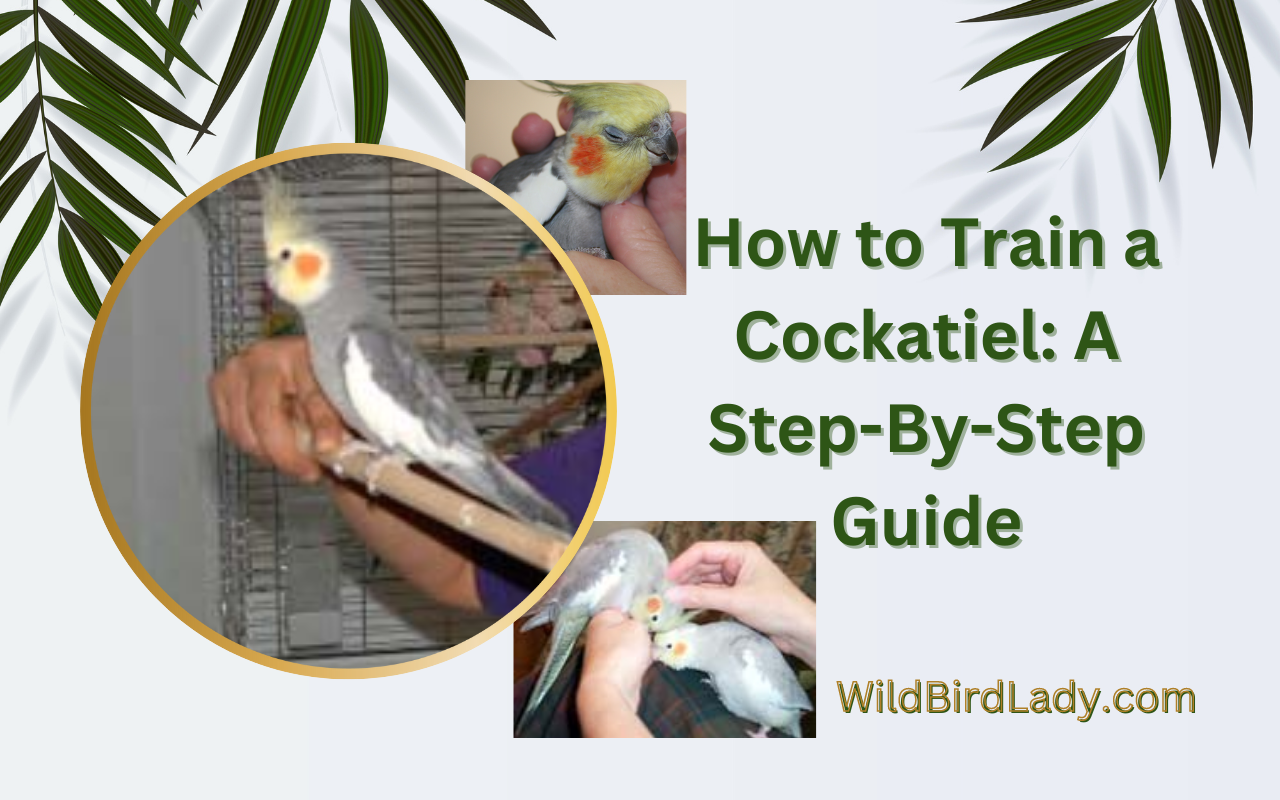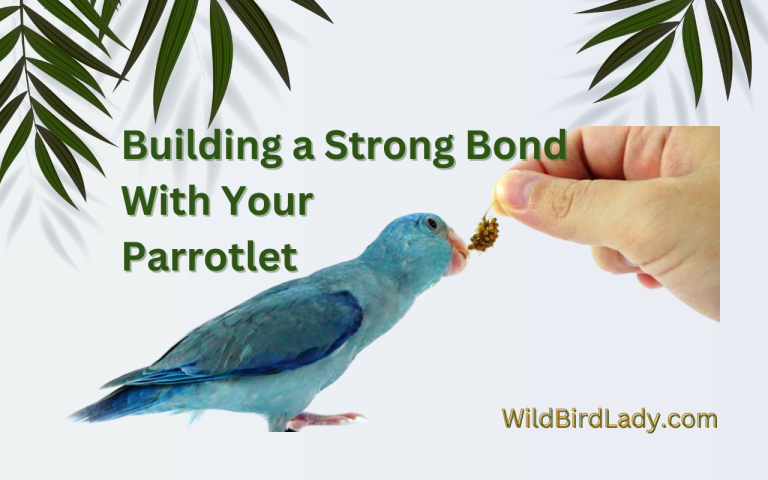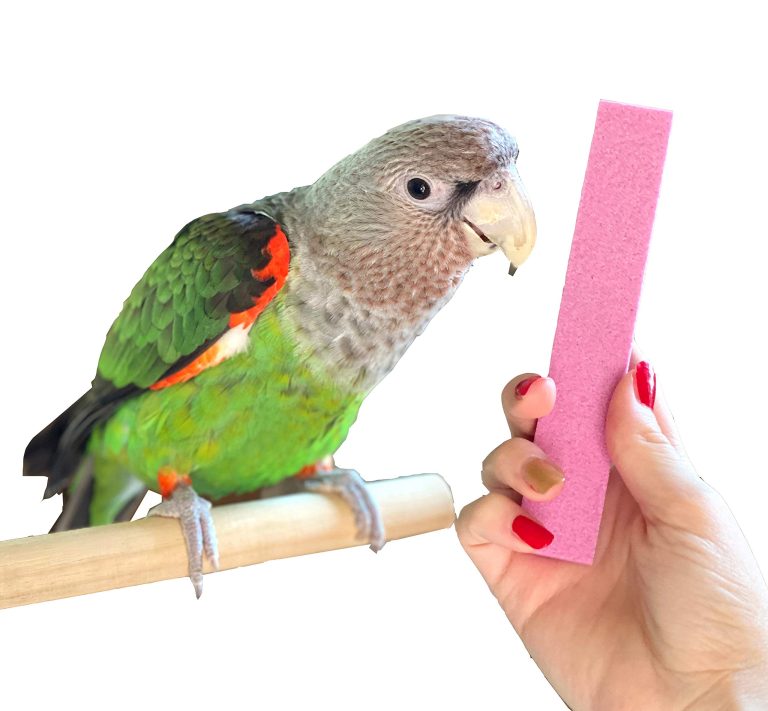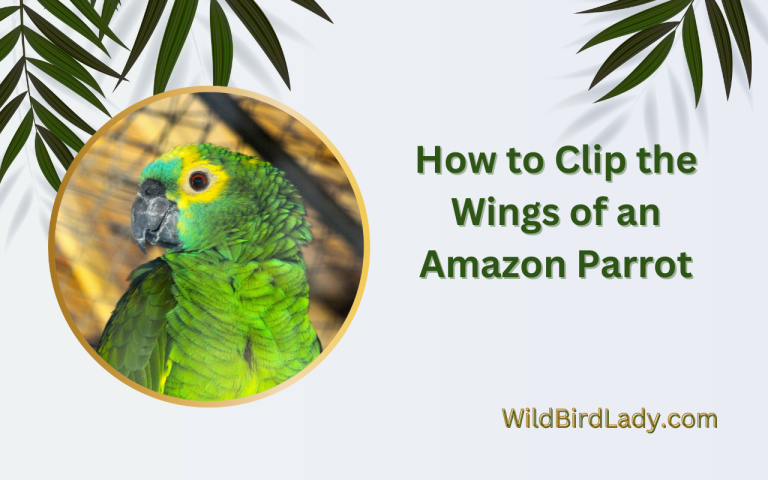How to Train a Cockatiel: A Step-By-Step Guide
To effectively tame cockatiels, follow this step-by-step guide. With patience and consistency, you can train your feathered friend to bond with you and learn new behaviors.
Welcoming a new pet into your home is an exciting experience, but it can also be a little daunting. If you’re bringing home a cockatiel, it’s important to understand how to train and tame your new feathered friend. Fortunately, with a little patience and consistency, it’s possible to create a strong bond with your bird and get them to respond to basic training commands.
This step-by-step guide will walk you through the process of taming your cockatiel, covering everything from building trust to teaching them to perform tricks. By following these steps, you’ll be well on your way to developing a close relationship with your new pet bird.
Understanding the Nature of Cockatiels
The Natural Behavior of Cockatiels
Cockatiels are intelligent and social birds, typically kept as pets. They are native to australia and are known to have unique personalities.
- Cockatiels are social animals and thrive in environments with human interaction.
- They are diurnal, which means they are most active during the day.
- These birds tend to be vocal and use various whistles, chirps, and songs to communicate with other birds and their owners.
- Cockatiels are curious creatures and love to explore their environment.
- They are also prey animals, which means they may act skittish around unfamiliar people or objects.
The Importance of Understanding Their Body Language
Cockatiels communicate through a variety of body language cues. As a responsible pet owner, it’s essential to be able to read your bird’s body language and respond accordingly.
- Tail bobs: Cockatiels bob their tails to show excitement, contentment, or pleasure.
- Head movements: A cockatiel often tilts its head when curious, assessing its environment, or trying to get a better look at something.
- Vocalization: Different chirps and whistles can indicate your bird’s mood. Happy chirps and whistles mean your bird is content, while a loud, angry screech means the opposite.
- Puffed feathers: Puffed feathers can mean various things, including aggression, fear, or illness.
- Body posture: A bird that stands tall and holds its wings close to its body often indicates confidence, while a bird that cowers can imply fear or discomfort.
How to Observe and Understand Your Pet’s Behavior
Observing and understanding your pet’s behavior is essential in training them effectively.
- Spend time with your bird and observe its behavior patterns daily.
- Note any changes in your bird’s behavior and look for potential causes, such as a new object that’s causing your bird anxiety.
- Attend to your bird whenever it’s exhibiting fearful or aggressive behavior. Rushing to pick up a frightened bird may only heighten its fear and lead to further aggression. Instead, calm your bird with reassuring words and gentle body language.
- Make sure you provide a safe and comfortable environment for your bird to thrive. A lack of stimulation, poor nutrition, or limited socialization can cause stress and lead to behavioral problems.
Understanding the nature of cockatiels is critical in effectively training them. By observing their behavior, communicating through their body language cues, and providing ample care and attention, you can develop a strong bond with your pet bird.
Establishing Trust with Your Cockatiel
Building trust through positive reinforcement:
It is crucial to build a positive relationship with your cockatiel. With the right training techniques, you can teach your bird to trust you.
- Use positive reinforcement: Cockatiels respond well to positive reinforcement. Reward them with their favorite treats whenever they exhibit good behavior. It helps them understand that good behavior is desirable and repeatable.
- Practice consistency: Consistency is the key to cockatiel training. If you want your bird to learn and exhibit certain behavior, you should be consistent in rewarding them and affirming their actions with verbal cues or petting them.
- Avoid punishment: Cockatiels are gentle birds that respond much better to positive reinforcement than punishment. Harsh treatment can harm your bird’s mental and physical health.
The Significance of Spending Time with Your Bird:
One of the most significant factors that contribute to building a relationship with your cockatiel is spending quality time with them. Regularly setting aside time to interact with your bird can speed up the training process.
- The power of play: Playing with your cockatiel helps you bond with them. You can play games like fetch, hide-and-seek, or tug-of-war, which not only helps you bond with your cockatiel but also helps your bird develop their cognitive skills.
- Training sessions: Training sessions with your cockatiel can be a great way to bond with your bird. Sessions can include teaching your bird how to mimic sounds or speak, step-up or step-down on your finger, or teaching basic commands.
- Mealtime bonding: You can also take advantage of mealtime by sitting with your cockatiel when they eat. This can help your bird associate you with good things, and you can take the opportunity to talk or interact with your bird.
Identifying and addressing your bird’s fears:
As prey animals, cockatiels are prone to anxiety and fear. Identifying and addressing your bird’s fears can help in building trust with your cockatiel.
- Observe your bird: Observe your bird to understand what makes them anxious. A few things that might scare your cockatiel include loud noises, sudden movements, unfamiliar people or pets, or certain objects.
- Gradual exposure: After identifying your bird’s fears, gradually expose them to what they’re afraid of, but do so in small and safe doses. For example, if your bird is afraid of the sound of a vacuum cleaner, turn it on in another room until your bird is more comfortable with it.
- Be patient: Remember to take things slowly. Building trust with your cockatiel takes time and patience. Rushing the process will only make things worse.
By following these tips, you can establish a trusting relationship with your cockatiel and strengthen your bond with them. Remember to be patient, consistent, and use positive reinforcement in your training sessions.
Creating a Safe and Stimulating Environment for Your Cockatiel
Your cockatiel’s environment is an essential aspect of their overall well-being and a crucial component in taming them. Here are some key factors to consider when creating a safe and stimulating environment for your feathered companion.
Cage Selection and Setup
The cage is where your pet bird spends most of their time, so it’s crucial to choose and set up the right one.
- Choose a cage that is spacious enough for your cockatiel to spread their wings and move around comfortably.
- Get a cage with horizontal bars that allow your bird to climb. Vertical bars aren’t suitable for cockatiels, as they are primarily ground dwellers and not agile fliers.
- Position perches at different levels and sizes to encourage exercise and foot health.
- Place food and water dishes in an accessible but separate location from perches to avoid contamination.
Proper Positioning of Toys and Perches
Providing toys and perches that stimulate your pet bird’s mind and body is essential for their physical and mental health and taming journey.
- Offer a variety of toys with different textures, shapes, and colors to keep your cockatiel entertained.
- Place perches in various locations throughout the cage and arrange them in different heights to encourage exercise and maintain foot health.
- Avoid placing toys or perches directly above food or water dishes, as cockatiels tend to avoid defecating on their perches or toys if possible.
The Role of a Balanced Diet and Daily Exercise in Taming Cockatiels
A nutritious diet and daily exercise are crucial in keeping your cockatiel healthy, happy, and open to interaction.
- Provide fresh fruits, vegetables, and quality pellets as the staple diet.
- Offer healthy treats like nuts or seeds in moderation.
- Take your cockatiel outside the cage daily to encourage exercise and human interaction.
- Engage in daily socialization beyond health care and ensure your bird gets sufficient rest.
By creating an atmosphere that catered to your cockatiel’s physical and mental health, you set them up for success in taming and a long and healthy life.
Basic Training Techniques
Training cockatiels can be an excellent way to bond with your pet and teach them new skills. Basic training techniques are essential for pet owners to form strong relationships with their birds. In this section of our guide to effective training, we’ll cover the basics of target training, clicker training, and how to teach your cockatiel tricks with our step-by-step approach.
We recommend starting with basic training techniques before moving on to more advanced skills.
Explanation of Target Training
Target training is a basic training technique that teaches your cockatiel to touch a small object like a stick or your finger on command.
- Target training is an effective method to build trust between you and your cockatiel.
- You’ll need a small object that your cockatiel can touch, like a pencil or a stick.
- Hold the target near your cockatiel’s beak, and when they touch it with their nose, reward them with a treat.
- Repeat the process and gradually increase the distance between your bird and the object until they can touch it from across the room.
- When your cockatiel is consistently touching the target, you can use the technique to teach them other tricks or behaviors.
Using Clicker Training to Increase Positive Behaviors
Clicker training is a training technique that uses a clicker to reinforce positive behaviors.
- You’ll need a clicker and a treat that your cockatiel likes.
- Click the clicker when your cockatiel does something positive like stepping up or coming to the front of the cage.
- Reward your bird with a treat immediately after clicking the clicker.
- Consistently repeat the process to reinforce positive behaviors in your cockatiel.
- Over time, your bird will associate the clicker with positive behaviors and respond accordingly.
How to Train Cockatiels to Step Up, Speak, And Perform Other Tricks
Teaching your cockatiel to step up, speak, and perform other tricks requires patience, consistency, and positive reinforcement.
- Start by getting your cockatiel comfortable with your hand by offering them treats.
- When your bird is ready, place your hand in front of them and say “step up.
- Use your other hand to gently guide them onto your hand, and reward them with a treat when they step up.
- To teach your cockatiel to speak, say a word like “hello,” and when your bird repeats the word, reward them with a treat.
- You can also train your cockatiel to perform other tricks like spinning in circles or playing dead using target training and clicker training.
Basic training techniques are essential to build a strong bond with your cockatiel and to teach them new skills. Target training and clicker training are effective methods to reinforce positive behaviors in your bird, while step up, speak, and other tricks require patience and consistency.
Use our step-by-step approach to train your cockatiel and form a lasting relationship with them.
Advanced Training Techniques
Taming cockatiels: a step-by-step guide to effective training is an enlightening source for pet owners looking to find ways to train their feathered friends better. In the previous sections, we have covered the basics of cockatiel training. Let’s move on to the next level and learn the advanced training techniques.
Teaching Cockatiels to Fly on Command
Cockatiels are birds that love to fly, making flight training an excellent way to bond with them.
- Find a large, open space to train your bird, free of any potential hazards.
- Train your bird to recognize a specific command before takeoff, such as “flight” or “ready, set, go.
- Start with a short distance and gradually increase it as your bird becomes more comfortable and confident.
- As an added challenge, you can incorporate obstacles to fly over or under.
Building Communication Skills Through Speech Training
Cockatiels are social birds and love to communicate through various chirps and sounds. Speech training is an excellent way to build communication skills and strengthen your bond with your pet.
- Start with simple words or phrases, such as “hello” or “good morning.
- Repeat the word or phrase several times a day in the presence of your bird, and eventually, they will try to mimic you.
- Be patient, consistent and use positive reinforcement to encourage your bird’s efforts.
- Recognize that not all cockatiels can learn to talk, so don’t get discouraged if your bird isn’t interested.
Understanding the Proper Way to Discipline Your Cockatiel
Disciplining your cockatiel is essential, but it must be done in a humane and constructive manner.
- Always use positive reinforcement for good behavior, such as praise, treats, or toys.
- If your bird exhibits undesirable behavior, such as biting or screaming, remove them from the situation and don’t give them attention.
- Never hit or physically harm your bird, as this will only lead to negative behaviors and a lack of trust.
Recap of all the Important Points
Training your cockatiel requires patience, dedication, and consistency.
- Start with the basics of training, such as teaching your bird to step up and becoming comfortable with handling.
- Gradually move on to more advanced techniques, such as flight and speech training.
- Discipline your bird in a humane and constructive manner.
- Always use positive reinforcement to encourage good behavior.
The Need for Patience, Dedication, and Consistency to Successfully Train Cockatiels
Training a pet bird requires a significant investment of time, effort and patience. That’s why it’s crucial to remain dedicated and consistent throughout the training process.
- Be patient, and don’t rush the training process. Each bird has its unique pace and personality, so acknowledge and work with it.
- Dedicate time every day to interact with your bird and to practice training exercises.
- Consistency is key in enforcing rules and discipline to establish a strong understanding between you and your bird.
A Summary Of The Importance Of Maintaining A Positive Relationship With Your Bird
Your relationship with your bird has a significant impact on its training and well-being.
- Always treat your bird with care and respect.
- Try to understand your bird’s behavior and personality to develop a strong bond.
- Build trust with your bird through positive reinforcement and consistency.
Advanced training for your cockatiel requires patience, dedication, and consistency. Understanding your bird’s behavior and personality is fundamental to establish communication and maintaining a positive relationship. Incorporating flight and speech training as well as discipline in a humane way will enhance your pet’s skills, personality, and strengthen your bond.
Frequently Asked Questions
How Do I Train My Cockatiel To Talk?
Cockatiels can learn a few words and phrases, but it can take time and patience. Consistent repetition, positive reinforcement, and treats can encourage your cockatiel to mimic words and sounds. Start with simple words like “hello” and “goodbye”, and repeat them often in a calm and positive tone.
How Long Does It Take To Train A Cockatiel?
The amount of time it takes to train a cockatiel depends on the bird’s personality and age, as well as the trainer’s consistency and patience. It can take anywhere from a few weeks to several months to see significant progress in your bird’s training.
What Are Some Common Behavior Problems In Cockatiels?
Common behavior problems in cockatiels include biting, screaming, and feather plucking. These can be caused by boredom, stress, or lack of socialization. Address these problems by providing plenty of toys, social interaction, and a consistent training schedule. Consult an avian vet if the behavior persists.
How Can I Prevent My Cockatiel From Escaping Its Cage?
Prevent your cockatiel from escaping its cage by choosing a cage with narrow gaps between the bars. Secure all doors and latches, and consider adding a lock. Place the cage away from open windows and doors, and remove any sources of temptation like shiny objects or food.
How Often Should I Train My Cockatiel?
Train your cockatiel for short periods of time, around 10 to 15 minutes, once or twice a day. Consistent daily training sessions can promote better learning and recall, but be careful not to overtrain your bird as this can lead to stress and frustration.
Conclusion
Finally, training cockatiels involves a lot of patience and understanding. It is crucial to learn and understand their body language, preferences, likes and dislikes to gain their trust. Once you have this, you can easily teach them tricks and commands in a way that’s both fun and mutually beneficial.
Remember to use positive reinforcement at all times, treat them kindly, and always work at their pace. With these tried-and-tested tips, you can successfully train your feathered friend and enjoy a long-lasting and fulfilling relationship. So, start the training process today and watch as your cockatiel transforms into an obedient, playful, and happy pet!
Published on May 17, 2023 | Last Updated on June 28, 2025 by Rifat Ahmed








